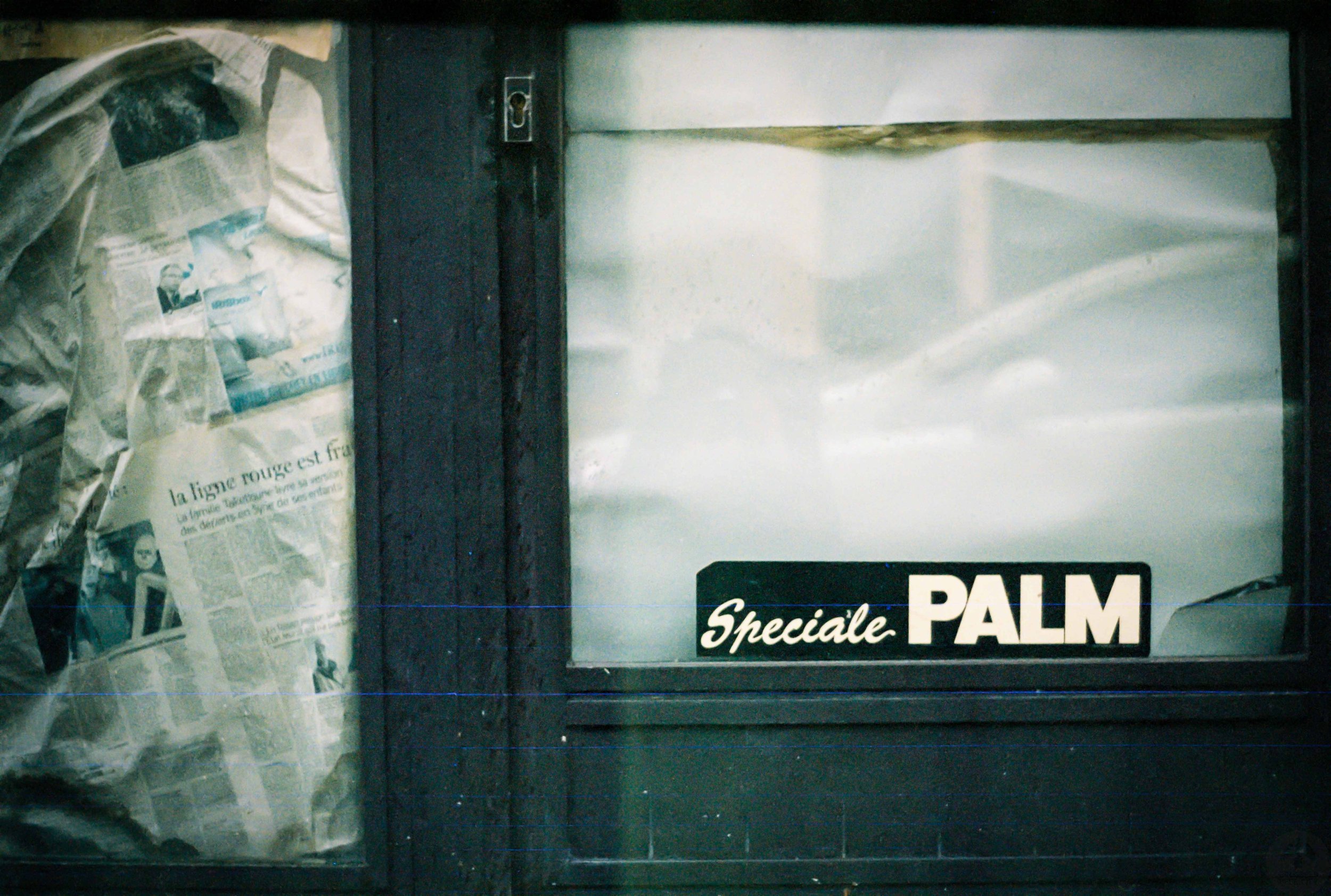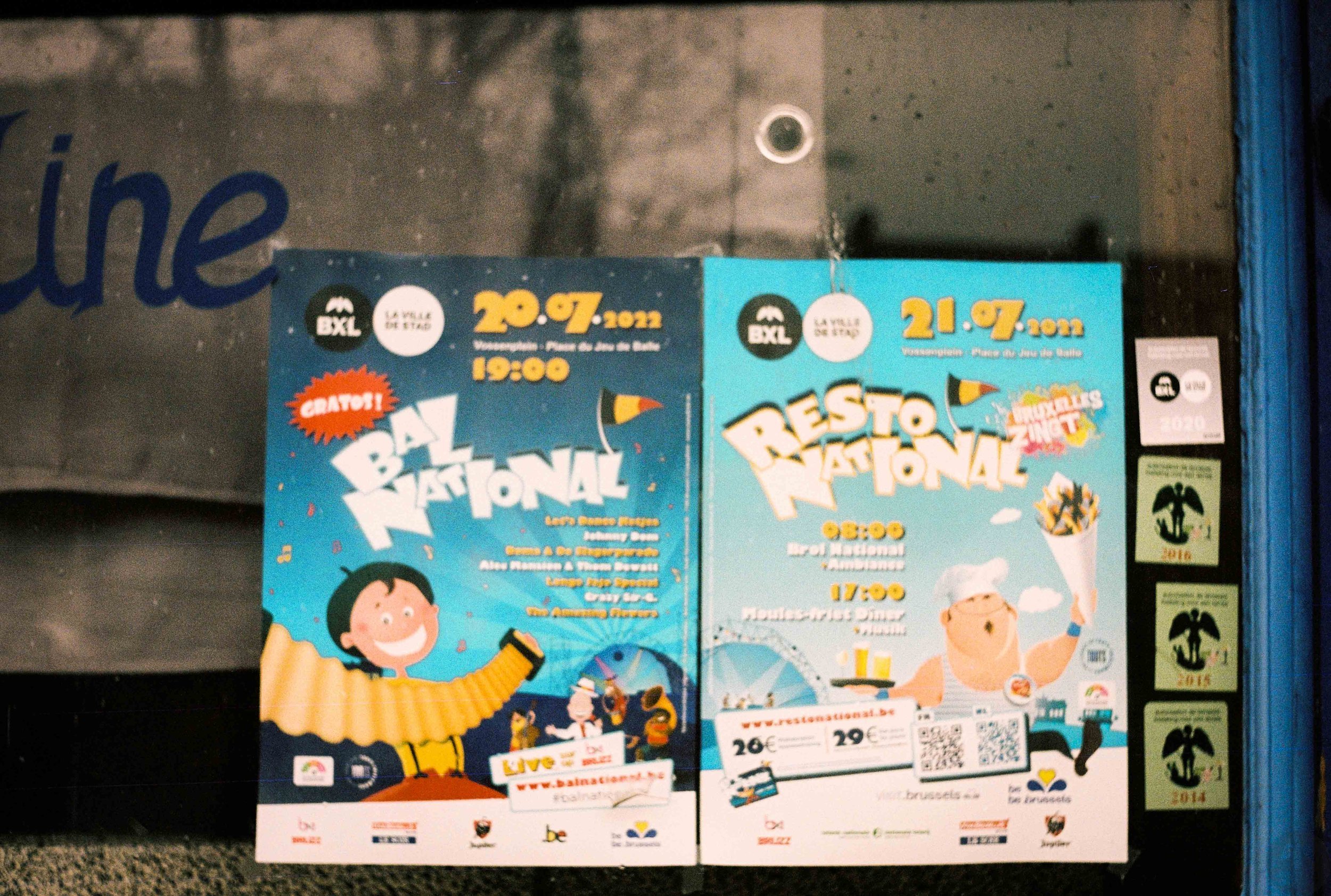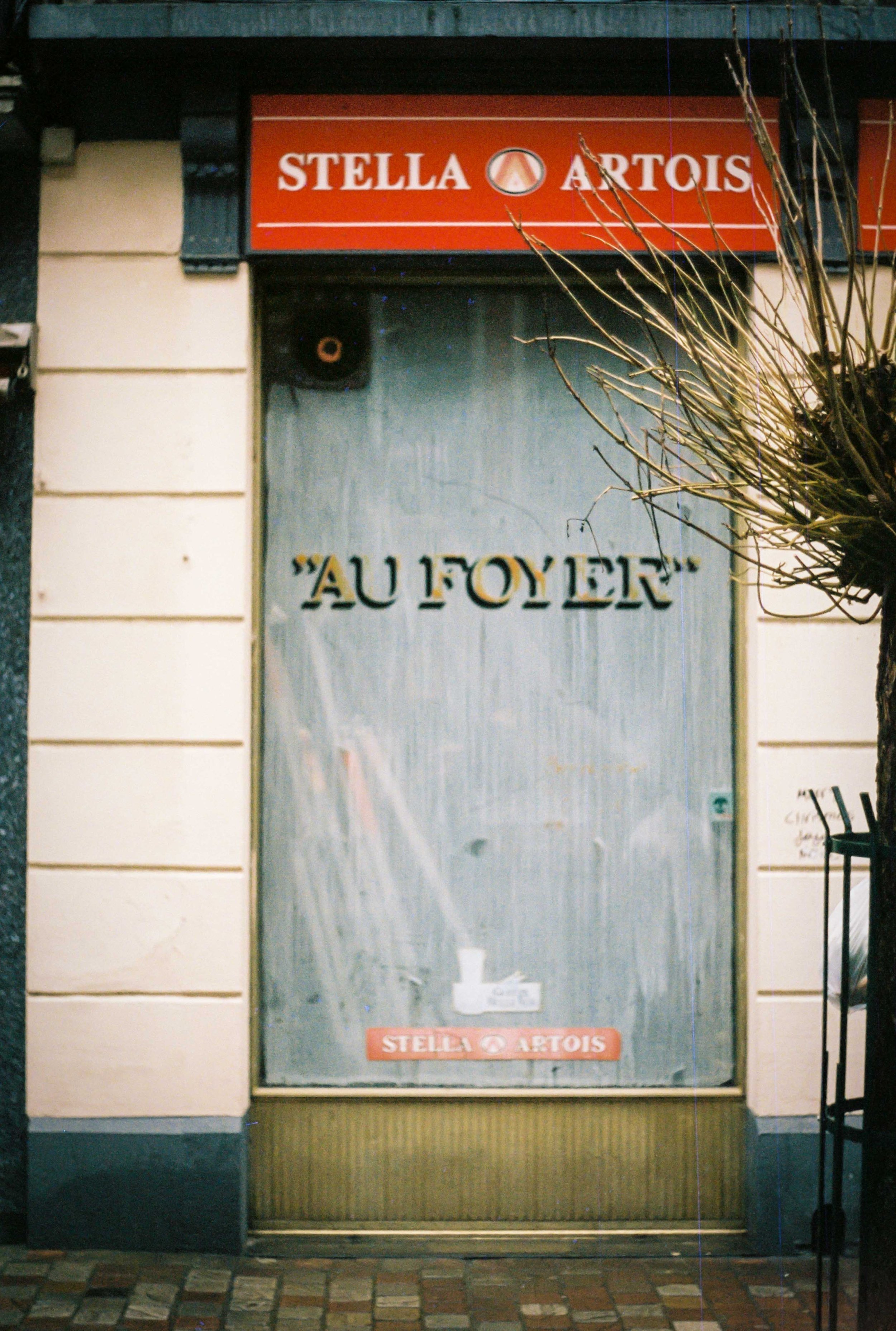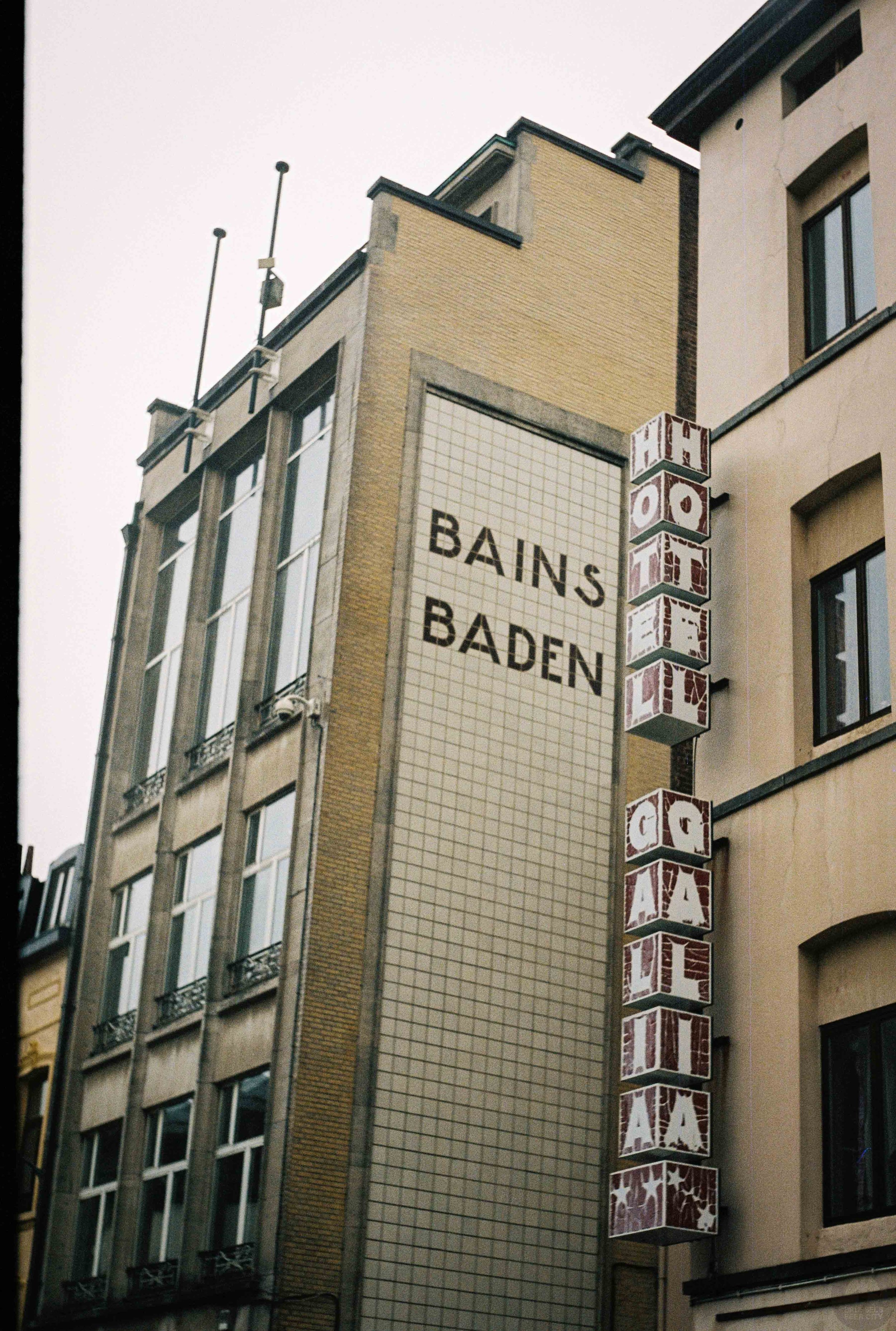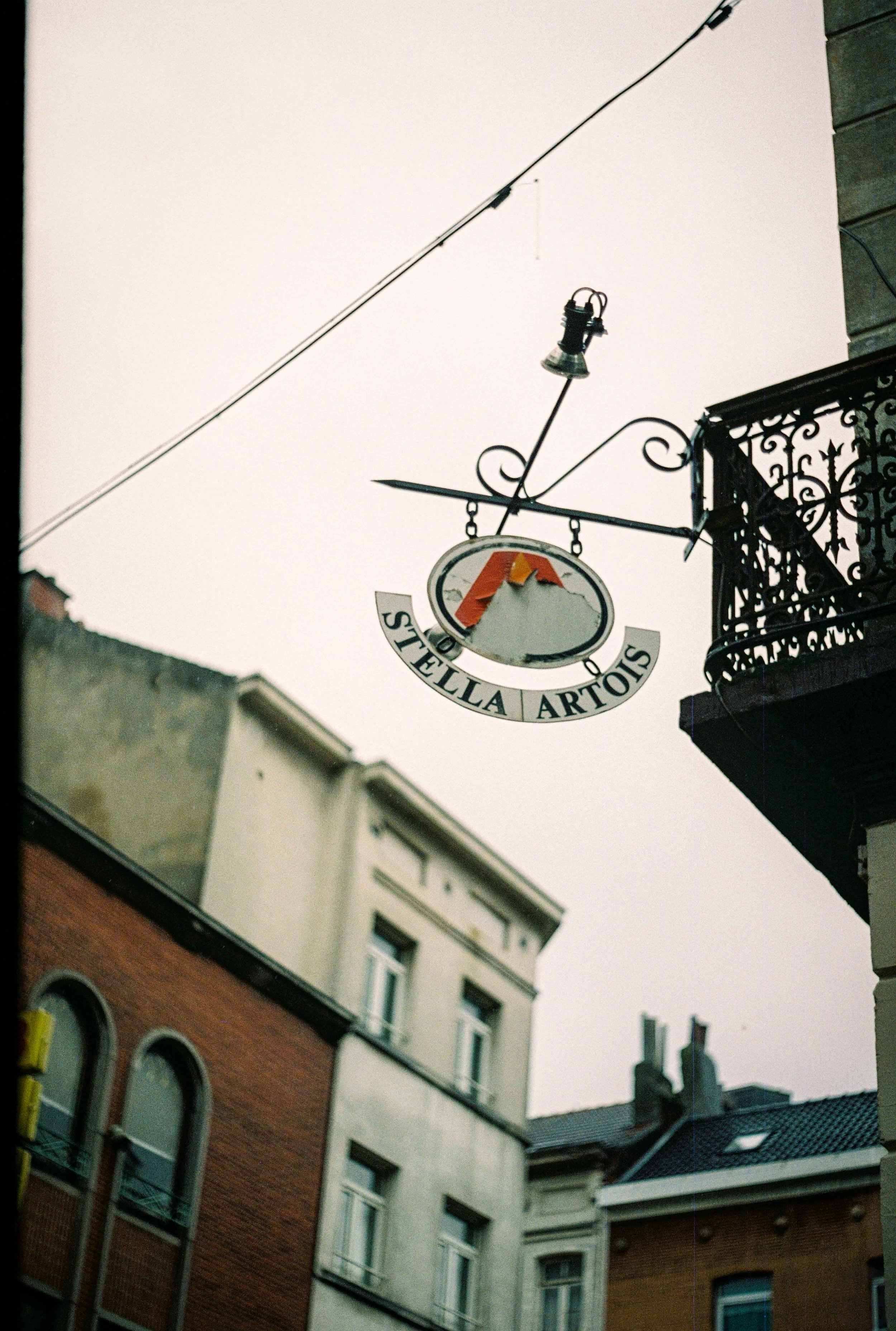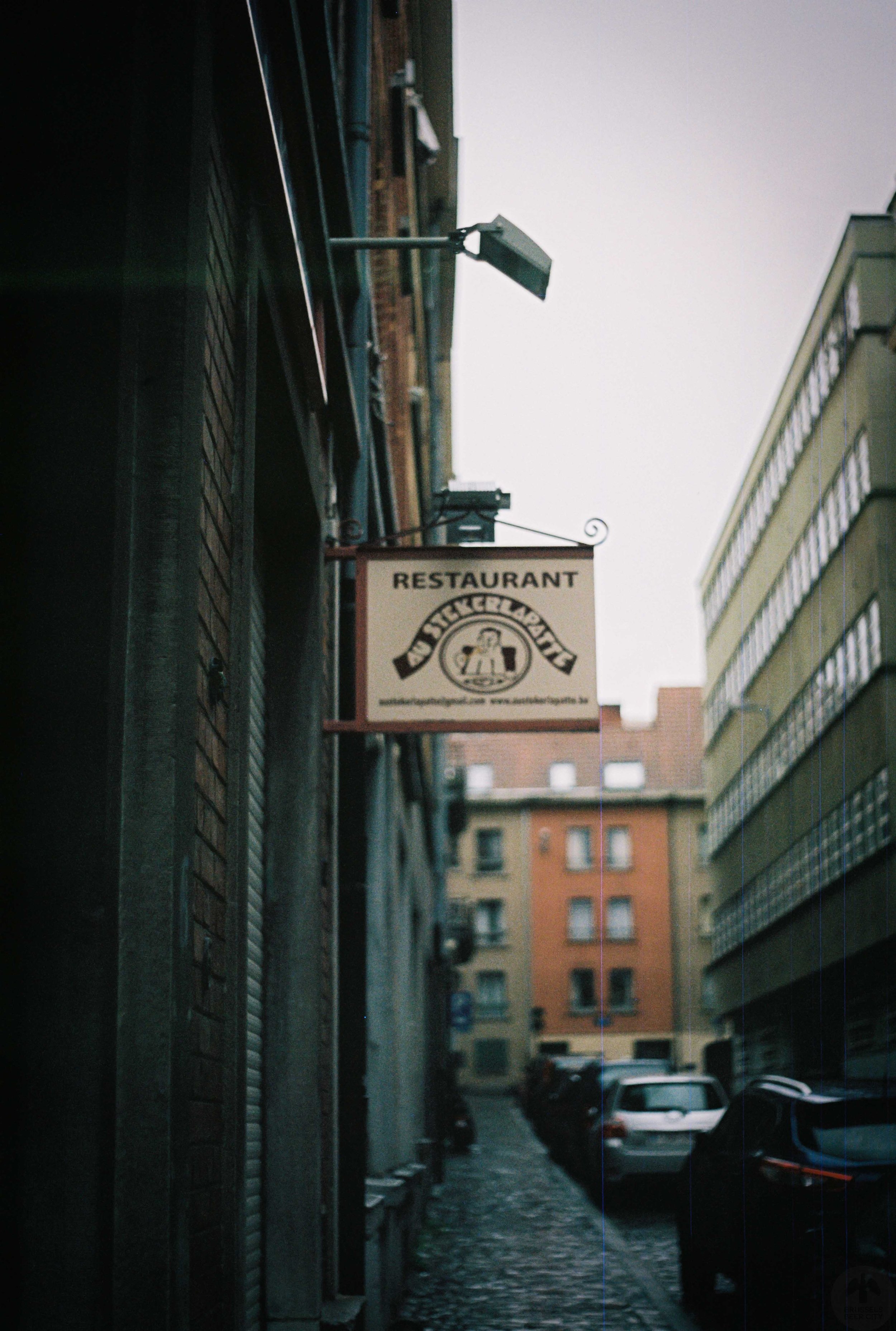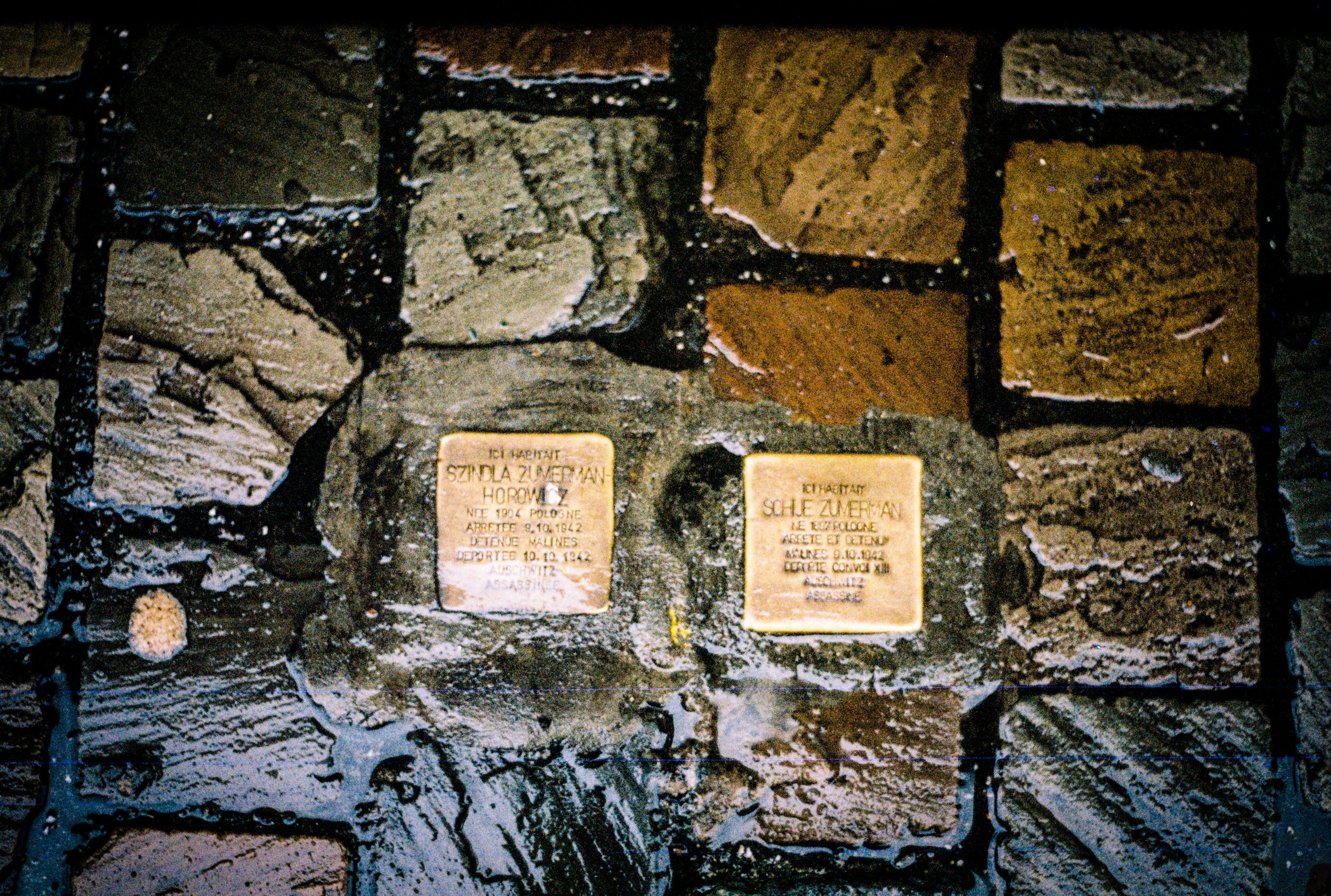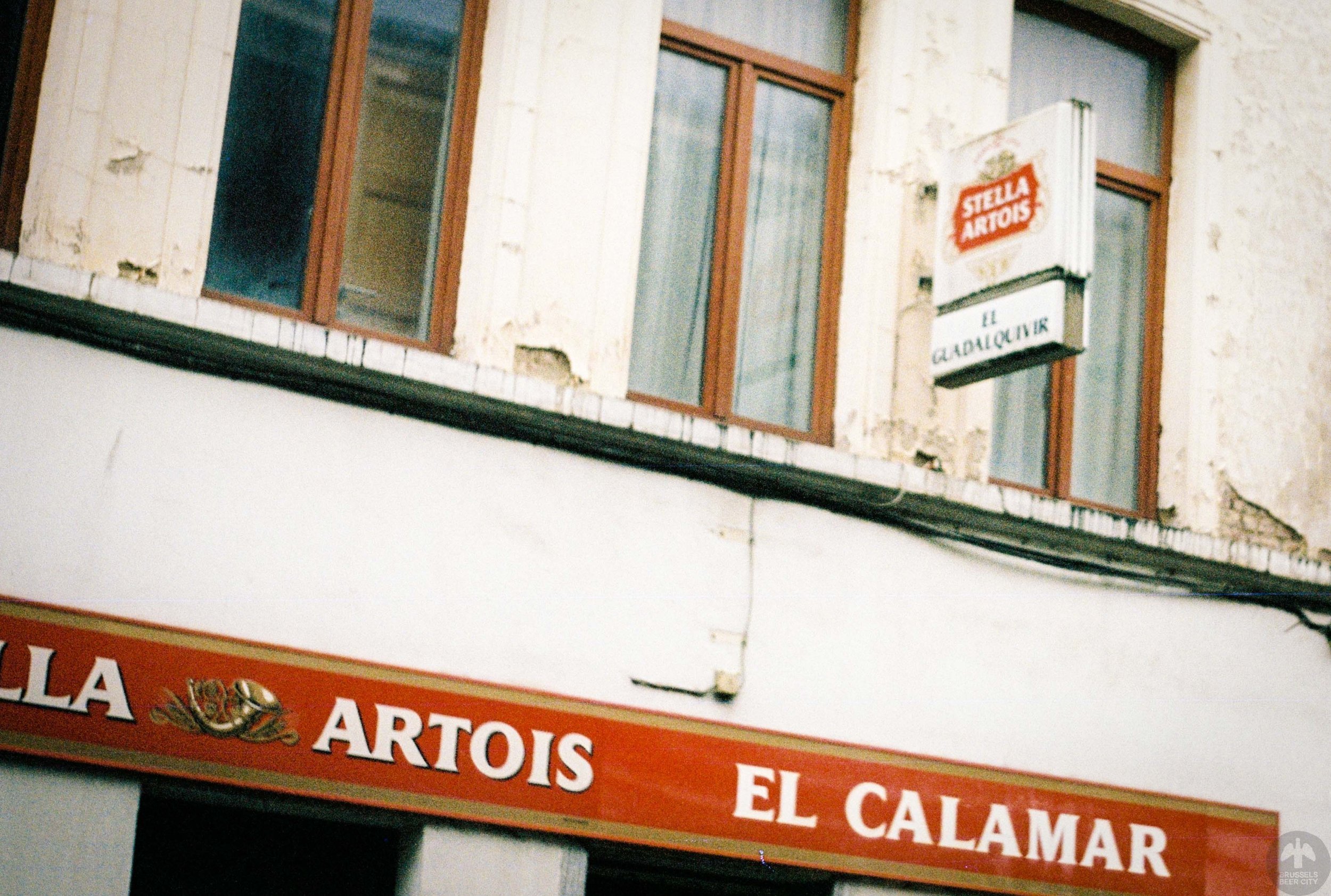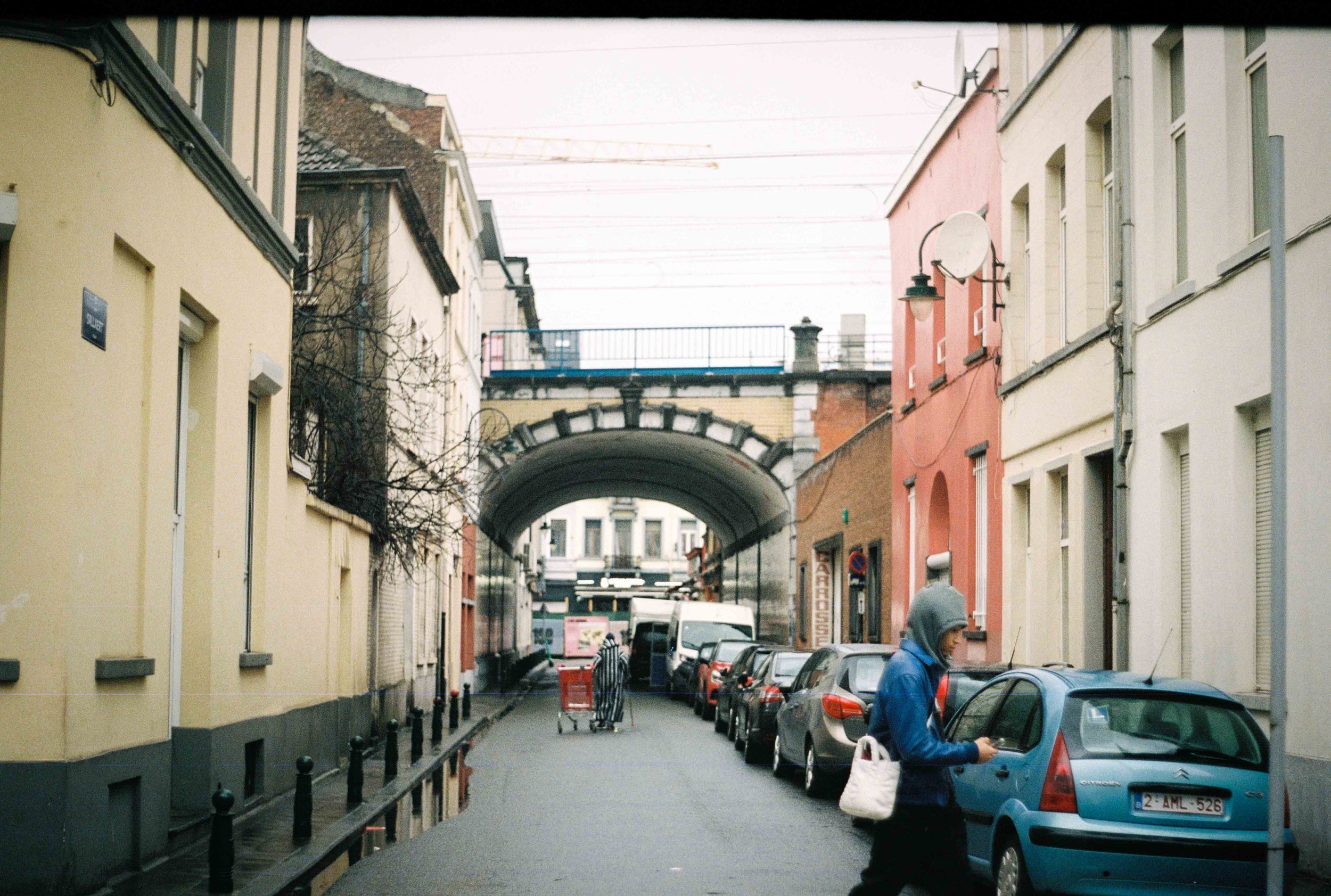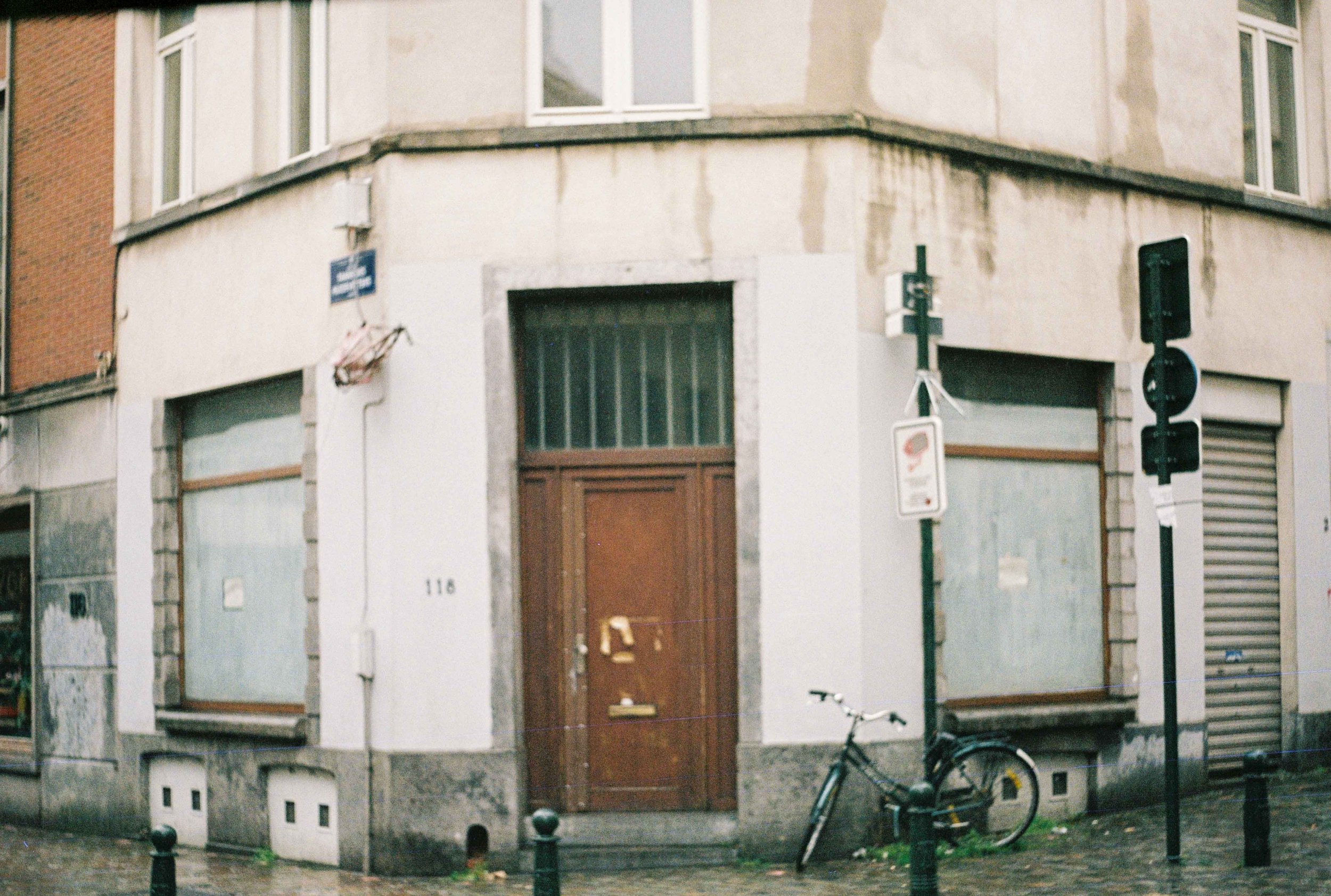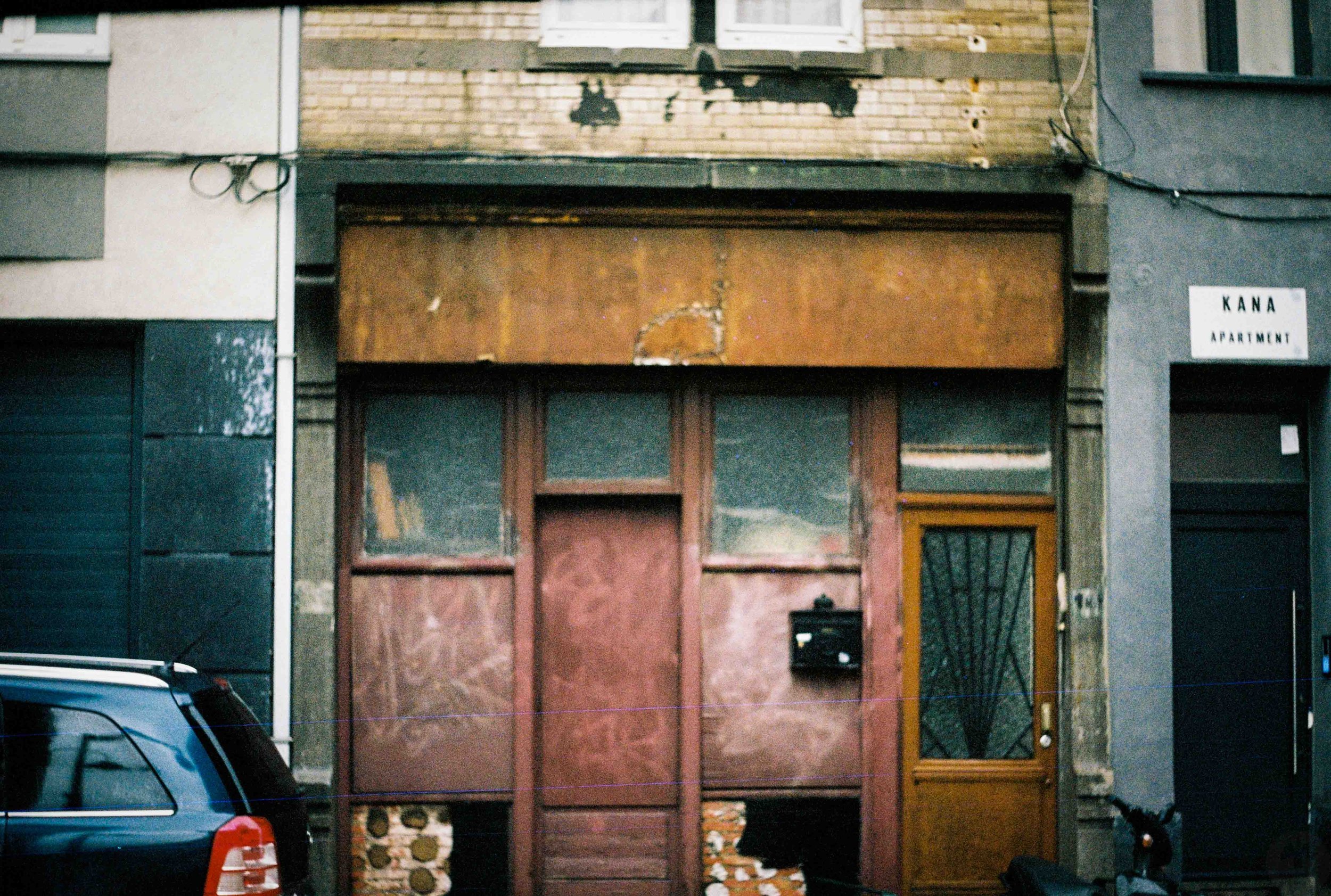Ghost Pubs of Brussels // The Marollen
It was only when we moved to the Marollen that I first felt like I got Brussels. In the spring of 2011 we found an apartment two doors over from the municipal swimming pool. It was a small place, one and a half bedrooms and a galley kitchen, with a third floor view over the Vossenplein and a ground floor deli that cooked boudins and caramelised onions for the bargain hunters browsing the square’s daily flea market.
Before that we’d spent two years squirrelled away in a garret studio in Schaarbeek. Rarely deviating from the route of the number 61 bus that stopped outside and my daily bike ride to work at Schuman roundabout, Brussels seemed like it was keeping us at arm’s length. Arriving in the Marollen felt like the city grasping us firmly to its bosom. The most Brussels of Brussels neighbourhoods, the Marollen is a loosely-defined district wedged into a corner of the city’s pentagonal centre and bounded on various sides by railway, a ring road, the Sablon district, and the leering Palais de Justice (built on the Galgenberg hill, the former site of Brussels’ gallows).
The Marollen was, and more or less remains, a volksbuurt, a loudly chaotic working class neighbourhood that was the source and repository of Brussels characteristic folklore like Zwanze humour and mythical drinker Jef Lambic. It had its own dialect - a jumble of Brabants Dutch, romance Walloon, Spanish, and Yiddish - and functioned as a clearing house for successive generations of new arrivals to Brussels. Flemish labourers arrived in the 19th century and were succeeded in turn by Spanish Republicans and Polish Jews, Portuguese and Italian gastarbeiters, and most recently Maghrébin communities. In 1969 the area’s rebellious character was immortalised in a popular uprising, the Bataille de la Marolles, when residents revolted against government plans to raze whole blocks to make room for an extension to the Palais.
There was the flea market too of course, a daily travelling circus of tat that stallholders would begin unloading under our windows at five or six in the morning before wrapping up and heading for lunch at one of the cafés on the square’s perimeter. After an afternoon lull life would pick up again and the bars would be busy until the small hours and in the morning the Vossenplein’s cobblestones and our porch would be greasy with vomit and urine and Cif. The Vossenplein was the heart of the Marollen, which was at the epicentre of Brussels. By extension we, leaning out our third floor window on a July evening listening to Nicole & Hugo close out another independence day celebration and the smell of moules and frietjes drifting up to us in the muggy air, were at the centre of things too. For a little while at least.
Then our first child came. We went out less but I started exploring the neighbourhood more. If she was wrestling against sleep in her cot, I’d take her down the lift in the buggy and we’d walk endless circuits on the streets around the Vossenplein, her wrestling against tiredness, and me too. I walked until the cobblestones had jostled her to sleep, and then I kept walking to keep her that way. We’d criss-crossed the Blaesstraat and the old Roman Hoogstraat that run parallel through the Marollen, and up and down the bumpy lanes connecting them. We’d zig-zag around the streets behind the Vossenplein, and if I’d enough energy we’d climb the Galgenberg and wander through the tenements rescued from demolition during the Bataille before looping back home.
On these directionless walks I started taking more interest in the streets on our beat, and began to notice the accumulated contributions left behind by previous generations of Marollien newcomers. It was the abandoned cafés (or bars, pubs or estaminets - it’s never clear to me exactly what to call them) that most caught my eye. There was Le Foyer just down the hill from us on the corner of the Rue des Tanneurs and Rue du Lavoir, though the calligraphy on the window called it “Au Foyer”. The Foyer looked as if it could have closed a week ago or five years ago, it was hard to tell. The metal Stella Artois uithangbord was still there above the entrance, and the red-and-white livery in which the café name was painted on the outsized lintel was still in good condition. The windows were obscured by grime and plastic wrapping, but you could still get a glimpse of rattan chairs stacked next to cardboard boxes, everything left as it was the day after closing.
Further along the Rue des Tanneurs was another place with two names, a matching Stella Artois nameplate, and similar ambiguity about its time of death. A white glass sign bolted to the first floor said El Guadalquivir, but written above the entrance in big white letters was El Calamar. After the second world war the Marollen became a refuge for recently-arrived Spanish families seeking work or escaping repression; once here, the Asturians set up Asturian bars, the Galciains set up Galician bars, and the Andalusians opened places like El Calamar. But eventually many from these communities did well enough for themselves that they could migrate to more salubrious neighbourhoods elsewhere in Brussels, taking their business with them. Places like the Centro Cabraliego on the Hoogstraat were able to keep going with a hardy core of regulars, but hidden behind the main square El Calamar was less lucky and the Mapa Turístico de Andalucía tacked onto the window was left to fade to yellow.
We’d pass by other places that similarly wobbled uncertainly between life and death. Buildings like the Volle Pot on the corner where the Blaesstraat and Boulevard du Midi converge, advertising its selection of 200 beers but fitfully opening and closing and never quite sure if it was living or dead. And the more we walked the better I got at spotting which tumbledown buildings used to be pubs. Once I knew what to look for, it wasn’t hard; at one point in its history one in every six houses in Brussels was some form of drinking establishment, and the Marollen was dense with them. There would have been a café, brasserie or estaminet for every 48 Bruxellois. Most would have struggled to fit half that, being little more than the converted front room of someone’s house. An organic part of the streetscape, many of the bars of the Marollen would have looked something like the Calamar - oversized wooden lintel for the name and maybe another sign hanging off the wall, with a big window and a door and that’s about it. Others were like the Volle Pot, straddling a street corner and trapezoid in shape, with a door in the middle flanked by large, symmetrical windows.
There are surviving examples of both types on the Vossenplein - places like La Brocante and Au Mouton Bleu, or the Volle Brol. There are others that are no longer pubs but have kept their commercial link - particularly those on the Blaesstraat and the Hoogstraat where buildings that once housed cafés have been repurposed as snack bars, second-hand clothes shops, and furniture showrooms. Step away from the busier streets and old bars and cafés have fared less well. These were the back-street boozers, offering people living in inhospitable, cramped conditions a place to escape to, to drink in, and to enjoy the company of their peers (so long as they and those peers were men). When their drinkers moved out or died and were not replaced by a new generation, many reverted back to use as housing. Others were simply abandoned and had long-since embraced their decrepitude by the time I started taking my walks. This was most visible in the steep narrow streets between the courthouse and the Sint Pieters hospital. There, virtually all commercial activity that isn’t connected to life or death has been scrubbed out and only the Sterkeplatte bistro - itself a former estaminet - survived in something like its former glory.
For a long time after we left in 2015, I had little reason to find myself in the Marollen. A second child had come along, commuting routes were rewritten, and my Brussels centre of gravity shifted away across the canal. But the kids are a little older now, and I’ve a little more time to myself at the weekends, time in which I sometimes find myself drifting back. Its streets and the ghostly ruins that dot them are just as reassuring as ever. The corner of the Vossenplein by the bank machine still stinks of piss from the metal urinal the city council installed not long before we left. The square still slopes haphazardly away from the Blaesstraat down to the church where they continue to celebrate the Spanish liturgy at noon every Sunday. The Foyer is as it was, the rusting Stella Artois sign still hanging above the entrance, and the packing boxes still visible through opaque windows. El Gaudalquivir is unchanged too, though a for sale sign has been and gone. The windows of the Volle Pot are boarded up with burgundy wooden slats and while Google Maps tells me it should be open, it looks as if it has finally and irrevocably succumbed to entropy.
But alongside this continuity, change is evident. The Skieven Architek, where my dad once ate a dodgy cheesecake which sent him running for the toilet and which squatted unused on a corner of the Vossenplein for years, is now a cooperative brewery-slash-bakery. On the Blaesstraat and the Rue des Renards there are more art galleries, more vinyl shops and more jewellery ateliers. The people on the streets look younger too, and more fashionable. Up on the Hoogstraat the Petit Lion café is still just about holding its own among the plant shops and the vegan coffee shops and the by-the-kilo vintage clothes shop that when we first arrived was still the Melting Pot bar. It’s naive to think we left before the gentrifiers moved in; we were in its vanguard, we just didn’t stick around long enough to see it take root.
A few doors down from the Petit Lion the ghost pub club has snared a new member. When I walk past the big ALEX in white stained glass on the window of the Café Chez Alex I notice there are people inside but they aren’t drinking. I stop and see that the words BAR RESTO THÉ DANSANT on the window have been replaced by BROCANTE BRUXELLOISE. There are wooden crates stacked on the bar between the white porcelain tap handles and the chalk boards and art deco fittings are crowded out by other people’s cast-offs. I go online and see the last TripAdvisor review was in the spring of 2020, and find an article from the autumn of 2021 about its new occupants. A victim of the pandemic, in a neighbourhood that’s otherwise proven resilient to mass closures.
***
Walking around the Marollen now - sans buggy, and seven years since we moved out - feels like browsing in a second-hand shop and finding an old jacket I’d donated to charity years ago. It fits like it used to and it still smells the same and at first glance it looks just as battered as it used it. Only it’s not quite the same jacket because some other owner after you has since given it a colourful new lining and patched up the holes in the pockets. Maybe the next time I come back the moths will have gotten at it and there’ll be some new holes in the fabric. Or maybe someone will take a chance and resurrect Le Foyer or bring flamenco back to El Calamar.
*Images: Praktica L, with Kodak Portra 400 film, processed in Brussels at Mori Film Lab

